As one might imagine, the volume of communication – whether written, expressed in conversation, or merely uttered in brief passings which reach jazz festival artistic directors (or curators) on a regular basis is constant and sometimes dizzying. One of the more interesting elements of those communications is the fact that only a relatively modest percentage of those pitching for performance opportunities (and here I’m speaking not only of artists, but also booking agents, artist managers, and publicists) appear to have a grasp on the relative presenting philosophy, desires, or thematic designs of given festival presenters they communicate with. So with that in mind I decided to conduct a virtual jazz festival artistic director/curator’s roundtable discussion. The goal was to achieve some admittedly small sample size collective sense of how artistic directors/curators make their choices and what factors drive their decision.
The participants in this virtual roundtable include master drummer-educator, artistic director of Berklee College of Music’s pioneering Institute for Jazz and Gender Justice, and curator of Berklee’s former annual Beantown Jazz Festival (and artist-in-residence at last month’s DC JazzFest) Terri Lyne Carrington. Earlier this year it was announced that due to irreversible physical alterations to it’s park/street site, Beantown Jazz Festival was ending, and joining the (June) Boston Art & Music Soul Festival (BAMS), where Carrington now serves as co-curator. Terri Lyne is joined by Paul Carr, tenor saxophonist-educator and artistic director of the DMV’s annual mid-winter Mid-Atlantic Jazz Festival; John Gilbreath the director of Seattle’s year-round presenter Earshot Jazz, and curator of their annual Earshot Jazz Festival; Tim Jackson of the Monterey Jazz Festival; Danny Melnick of Absolutely Live Entertainment who curates the Freihofer’s Saratoga Jazz Festival, and formerly the Newport Jazz Festival; and Janis Burley Wilson of the fast-growing Pittsburgh Jazz Festival. I posed the following two questions:
What are the factors that guide your artistic choices?
Terri Lyne Carrington: Creating value, creating awareness, creating impact. Along with honesty, authenticity and quality.
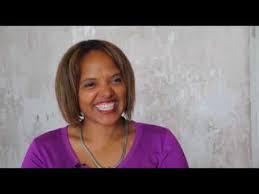
Paul Carr: There are a lot of things/factors which shape my artistic choices. We espouse a mantra of real jazz at Mid-Atlantic Jazz Festival, so (A) I try to consider artists that have a history of playing or have played classic jazz in their career. (B) I take into account the artist’s marquee value as it pertains to ticket sales, however many of our patrons trust our programming, so I have built up some credibility in that area, I hope. (C) At MAJF, jazz education is a huge part of our event, so I also consider artists who would resonate with the many High School and College jazz bands that perform at the festival. I also book artists that I think they [student musicians] NEED to see as well.
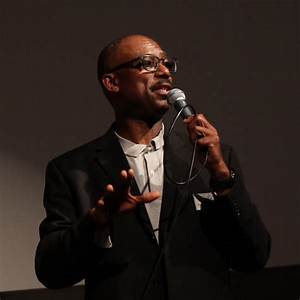
John Gilbreath: Service to the art form. Honoring the heritage and the creative legacy of jazz as a primarily Black American cultural treasure. Showcasing emerging and lesser-known artists who are notable in the field. Highlighting the constant global expansion of the music as well as its intersections with other cultural expressions. Striving for racial and gender equity. Supporting tours in our region by working cooperatively with other presenters [ed. note: Gilbreath is a founding member of the Western Jazz Presenter’s network which meets to discuss ideas and collective tour opportunities]. Keeping abreast of developments in the field through print media, recordings, and peer consortia. Presenting our own resident artists and student ensembles in a world-class festival setting. Showcasing returns to our community by artists who came up here and have established themselves in New York and beyond. Finding relevant collaborations with other presenting and educational organizations in our community. Developing special projects and commissions with our own local artists. Finding promotional harmony with local jazz radio and other media. Input. Input. Input.
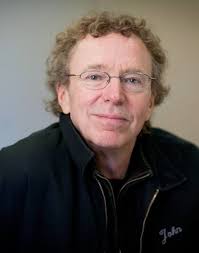
Tim Jackson: First and foremost I look to curate a joyful event that reflects what is currently happening in jazz as well as honoring the legacy of the music with the intention to inspire, thrill and create moments of reflection for our audience. On a practical level, a festival of our size (40,000) needs strong headliners as well as a compelling arc to the weekend’s narrative that will create the interest and excitement that will generate ticket sales. A well-balanced, stylistically diverse program works better for us than an annual “theme” to the festival, although it is inevitable that several smaller themes emerge each year, sometimes by design and sometimes by happy coincidence.

Danny Melnick: There are numerous factors that go into my programming work, but the primary issue is to make sure the artist(s) and their music appropriately fit into the series/festival/venue, etc. For example, I can’t and won’t book an artist who can’t/won’t sell tickets in a theater of a certain size. When programming a benefit event, which will draw a certain audience, I have to make sure the artist is someone who might be related to (or at least has an appreciation and respect for) the cause, whom the audience wants to see and hear, who is affordable, cooperative, etc.
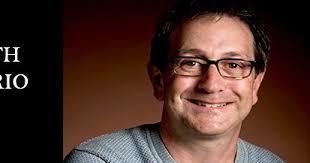
Janis Burley Wilson: Style, professionalism, respect for jazz tradition with commitment to innovation. I try to curate with a well-rounded approach. Straight ahead, global links, fusion, r&b… I try to give my audience music they can feel, that feels familiar, but also to expose them to what is new and fresh on the jazz scene.
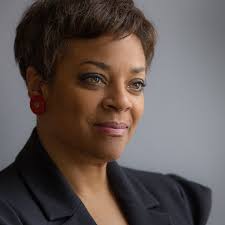
Is your market the biggest factor in determining your artistic menu, or is it the overall design of your event (or series) and the mission/artistic philosophy (guiding principles/history) of your organization?
Carrington: I consider the market, but it is not the most important thing because it is an opportunity to stretch peoples imaginations and penetrate their psyche with provocative thought. The event or series matters of course, especially if themed. I am partial to themed events as it creates a border of sorts that can be expanded. Freedom and boundaries can create something interesting. And of course an organization’s mission statement or guiding principles should be considered. I would hope that if I am involved then I am in alignment with those anyway…
Carr: I would say our market is our biggest factor in determining our artist menu. We receive very little subsidy to produce our event. Therefore our market has to come first. This is not entirely a bad thing because it forces you to exercise objectivity in booking artists that appeal to your audience.
Gilbreath: Service to the art form. We see our mission and guiding principles as inseparable from the cultural fabric of our city. Like jazz, Seattle builds on its cultural foundation with a focus on innovation, expansion, hard work, self-expression, and a social structure that recognizes individual accomplishment in the context of the whole. Within its remarkable overall music and arts scene, Seattle has a long-standing value system around jazz; from award-winning high school jazz programs to a diversity of regular performance venues, and an enduring respect for its own established masters. Yes, there are struggles, but in a city like this, it seems that a forward-looking annual jazz festival that stretches its own definitions each year is the only way to go.
Last year, our 30th festival, we put up 70 concerts over 30 days, in 22 different venues all around the city. This year’s [Earshot Jazz] Festival will be October 4-November 6. Get out here!!
Jackson: I start with our mission which is, in part, to celebrate the legacy of jazz and expand its boundaries. As we are a festival I like to keep the word “festive” foremost in the conceptualization of our event. MJF is also unique in that it is the world’s longest-running jazz festival and to me that instills both a historical imperative to celebrate and a sense of adventure for the future to explore. Unique programming is important to me and I try each year through our commissioning program, artists-in-residence, and showcase artists to create special moments that will evoke that “Monterey Magic” and leave our audience with a special feeling and a sense of discovery that invites a long-term commitment to the Monterey peninsula every September.
Melnick: It depends on the event, but for the Freihofer’s Saratoga Jazz Festival, which started in 1978 and I have been programming since 1999, the overall design of the festival and the guiding principles/history are equally important factors into how I program the festival. This festival has a deep history of presenting a diverse lineup, including numerous musical styles so that it attracts a wide audience. We do not attempt to define what Jazz, or any other musical style, is. We seek to entertain, illuminate, and educate.
We have two stages: a 5200 seat amphitheater and a smaller stage on the festival grounds, so the programming must fit those two stages properly and must be balanced between the two stages, each stage in itself, and throughout the weekend.
I have always looked at programming a festival like a jigsaw puzzle. Each piece has to stand on its own and fit into the rest of the picture.
Wilson: My market is important in my decision to book an artist, booking the artists that have a connection and respect for my audience, but I try to expand their jazz palate with new sounds. Our mission is to stay true to jazz roots while exploring jazz influenced music, so we will always be (at least while I’m around) a true jazz festival, not an R&B fest with a jazz tent.
So what’s your take? Please leave a Comment…

One Response to Curator’s Roundtable